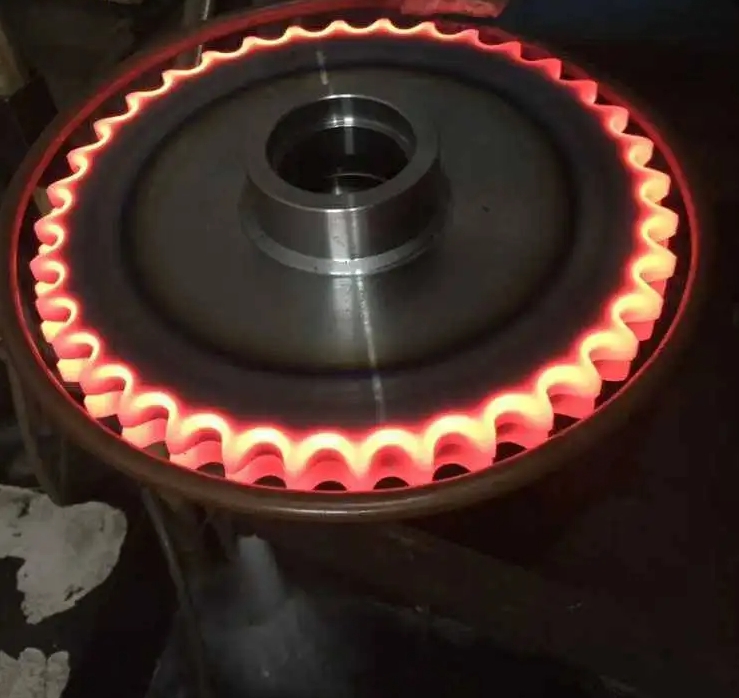- 22
- Aug
Reasons why the hardness of induction hardened parts does not meet the technical requirements
Reasons why the hardness of induction hardened parts does not meet the technical requirements
1. The quenching temperature is not enough
That is, the heating is insufficient and the austenitizing temperature requirement is not reached. For medium carbon structural steel, there is undissolved ferrite in the austenite, and there is undissolved ferrite in the quenched structure except for martensite, and the quenched surface of the workpiece is often blue. It can also be seen from the appearance of induction hardened parts that the normal quenched surface is beige, and the overheated surface is white.
2. קירור לא מספיק
That is, the cooling rate is lower than the critical cooling rate. In the quenched structure, in addition to part of the martensite, there is also tortenite, and the greater the amount of tortenite, the lower the hardness. It often occurs when the concentration of the quenching medium, temperature, pressure changes and the liquid injection hole is blocked.
3. Self-tempering temperature is too high
The problem of excessively high self-tempering temperature occurs in the shaft scanning quenching, which generally occurs during the horizontal shaft quenching or the stepped shaft vertical quenching. When the width of the liquid jet is short, the heating surface quickly passes the liquid jet and does not cool the quenching section enough, and the water flow is blocked by the steps (the large diameter section is on the top, the small diameter section is on the bottom), and the quenched section cannot continue to be cooled. As a result, apparent self-tempering temperatures are often observed and detected on the quenched surface.
4. Soft spot or spiral black belt
The soft spots and blocks on the quenched surface are often black, and the typical spiral black belt is a common defect phenomenon of scanning quenched parts. This black band is also called the soft band, and it is often a tortite structure. The solution is to spray the liquid evenly, and increasing the rotational speed of the workpiece can also reduce the pitch of the black belt, but the most basic thing is that the structure of the liquid sprayer should make the heating surface cool evenly. Clogged jet holes are often one of the causes of soft spots.
5. Influence of material chemical composition
The reduction of material composition, especially the carbon content, is one of the factors for reducing the hardness. If necessary, the selected carbon content can be used for important parts, so that the upper and lower limits of w(C) can be narrowed to within 0.05%.
6. Preparatory heat treatment
Changes in the quenching and tempering process, and the black skin of the rolled material remains on the quenching surface are also the reasons why the hardness of the induction hardened parts does not meet the technical requirements.
7. Surface decarburization and decarbonization
It often occurs on the surface of cold-drawn materials. Therefore, after quenching these bars, the outer layer can be ground by 0.5mm before hardness. If the surface hardness is low, the inner layer hardness is higher than the surface, indicating that there is a carbon-depleted or decarburized layer. (exception for special geometries such as cam lobes, gear tops).
8. Ribbon primitive tissue
The banded structure in the original structure of the quenched part will lead to insufficient hardness after quenching. There is undissolved ferrite in the banded structure, which cannot be dissolved during the austenitization process, and the hardness after quenching must be insufficient, and the banded structure is difficult to eliminate even if the heating temperature is increased.

